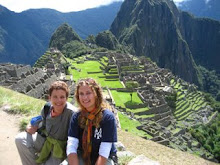While working in the garden recently, I was surprised to pull out a plant and see a small, baby snake wiggle through the dirt. It was only the size of a big worm and although initially it gave me a little shock, I became quite enamored by it.
30 minutes later: As I continued digging, another little snake popped up. Hmm. I didn't mind the first one, but two? It's mouth was the size of my baby-toe nail so I still wasn't too worried. But soon enough, baby-snake 3 rolled by.
At this point, the only thing going through my mind was "If there are all these baby snakes slithering around...mama snake is more than likely close by. And I don't want to have a surprise greeting".
I reluctantly finished the day off, but was incredibly cautious and I'll admit, a little nervous.
A few days ago, I was chatting with a City Farm fellow, Amanda. Amanda is the brown thumb enthusiast, with years of experience living on a permaculture farm. She's the guru of gardens (and makes a mean vego dinner). During conversation, my baby-snake experience came up and she started laughing. The laughing got louder and annoying to me. She then managed to squeeze out between chuckles that what I saw was a LEGLESS LIZARD, not a snake!
Do these things really exist? To find out, I consulted the next intelligent thing that was filled with information. Google. And what does google tell me? Well, legless lizards are a large family of "Snake-like lizards". Hm. Maybe someone should have mentioned this to me? Although, why this topic would come up in conversation is beyond me.
My google search told me the following:
" A combination of 2 of the following confirms it is a lizard:
1 - Broad, fleshy tongue
2 - Ear-opening behind eye
3 - Two or more rows of belly scales
4 - Tail as long as to much longer than body
5 - If uniform body pattern present, then longitudinal (stripes versus crossbands in Oz snakes. "
Now, I'd like to comment on these "confirmations". When one comes across a legless lizard while gardening, (not to mention one that is the size of a large worm), am I really going to crouch down and examine its Broad, Fleshy Tongue? Or how about I turn it over and pin it down to see how many rows of belly scales it has. Please.
As I continued reading my google search, I came across the following pictures and descriptions. This one seemed to match my case. Next time I see one, I will examine its minuscule tongue and scale fixation.
A common burrowing legless lizard dug up in gardens in Perth.








